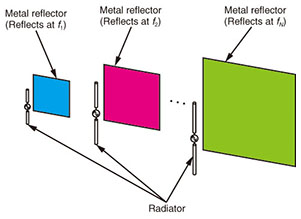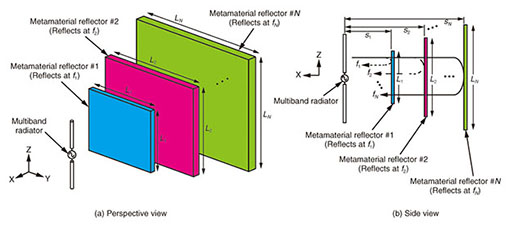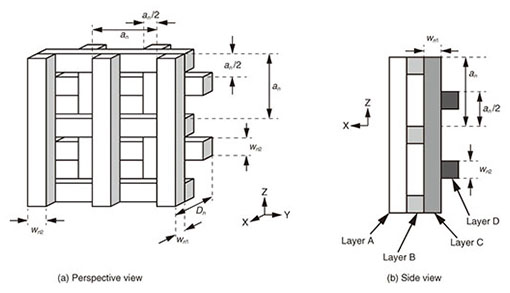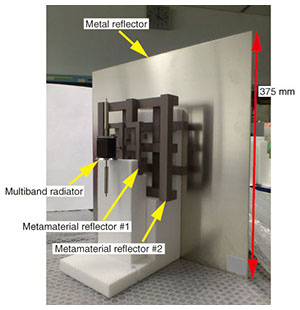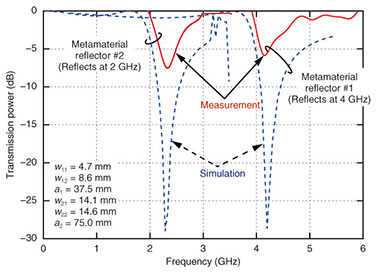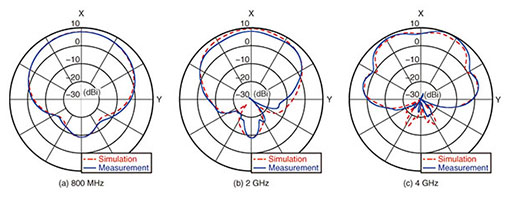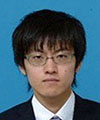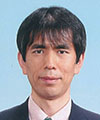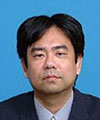 |
|||||||||||
|
|
|||||||||||
|
Regular Articles Vol. 12, No. 7, pp. 38–42, July 2014. https://doi.org/10.53829/ntr201407ra2 Multiband Antenna Employing Multiple Metamaterial ReflectorsAbstractNTT Access Network Service Systems Laboratories has proposed and developed a multiband sector antenna for mobile wireless communication systems employing multiple metamaterial reflectors and a multiband radiator that is suitable for areas with limited space. We present in this article a design for a triple-frequency-band antenna that radiates at 800-MHz, 2-GHz, and 4-GHz bands as an example of the proposed antenna. Keywords: multiband antenna, metamaterial, wireless communication 1. IntroductionMobile wireless communication systems must now offer higher bit rates because of the increasingly widespread use of smartphones and tablet terminals. Mobile wireless communication systems such as cellular networks commonly utilize multiple frequency bands to achieve high system capacity. In addition, cellular systems use a sector configuration to improve frequency efficiency [1]. A conventional sector antenna is shown in Fig. 1. It has a radiator and metal reflector for each frequency band used in mobile wireless communication systems. As these systems begin handling more frequency bands, it is expected that the increased number of antennas and the larger space needed for these systems will become a problem.
2. Multiband sector antenna employing multiple metamaterial reflectorsNTT Access Network Service Systems Laboratories is developing a small-volume multiband sector antenna employing multiple metamaterial reflectors. Metamaterial reflectors have a periodic structure and consist of dielectric rods. They also have electromagnetic band gap (EBG) characteristics, meaning that they can reflect/transmit electromagnetic waves according to the frequency band [2]. The EBG characteristics enable the reflectors to act as a band-stop filter or a band-pass filter. The concept of the proposed N-band sector antenna employing N metamaterial reflectors and a multiband radiator is shown in Fig. 2(a). The center frequency of the desired frequency band is defined as fn (f1 > f2 > … > fN). Metamaterial reflector #n reflects the electromagnetic waves of fn similarly to the way a metal reflector does. On the other hand, metamaterial reflector #n transmits the electromagnetic waves of specific frequency bands (fn+1, fn+2, …, fN, N > n) as if the reflector was transparent. Each metamaterial reflector reflects/transmits different frequency bands, so the proposed antenna can radiate multiple frequency bands in an area with a small footprint. The reflectors are square, and their side lengths are indicated by Ln. The distance between the multiband radiator and the front surface of each metamaterial reflector is sn, as shown in Fig. 2(b). Metamaterial reflector #N, which is furthest from the multiband radiator, can be implemented as a metal reflector in the proposed antenna.
The proposed concept yields better design prospects than those of other design concepts because when the reflected frequency bands change or the number of frequency bands increases, we only need to change the EBG bands or increase the number of metamaterial reflectors in the proposed antenna to adapt to the situation. 3. Woodpile metamaterialWe applied woodpile metamaterial [3] to the reflectors of the proposed multiband sector antenna. The woodpile metamaterial structure consists of layers of dielectric rods and is illustrated in Fig. 3. The rods have a base of wn1× wn2, where wn1 is the rod depth along the X-axis, and wn2 is the rod width along the Y- and Z-axes. Layer B (D) is at right angles to layer A (C) in space, and the woodpile metamaterial consists of four layers of rods. The spacing between rods in each layer is indicated by an. The rods in layer C (D) are set to the spacing of half of an from the rods of layer A (B).
4. Triple-frequency-band antennaWe fabricated a triple-frequency-band sector antenna with the same 90° beamwidth that radiates at 800 MHz, 2 GHz, and 4 GHz in order to verify the concept of the proposed antenna [4]. The prototype is shown in Fig. 4. The triple-frequency-band sector antenna comprises a multiband radiator, metamaterial reflector #1 (reflects electromagnetic waves at 4 GHz), metamaterial reflector #2 (reflects electromagnetic waves at 2 GHz), and a metal reflector (reflects electromagnetic waves at 800 MHz). The multiband radiator is separated from the reflectors by distance sn, which is a quarter of the wavelength of each frequency band. That is, s1 = 18.8 mm, s2 = 37.5 mm, and s3 = 93.8 mm. The multiband radiator consists of a biconical antenna and a dual-band sleeve dipole antenna [5].
The metamaterial reflectors consist of ceramic rods with a relative permittivity of 9.6 and a loss tangent of 3.5 × 105. The parameters of both metamaterial reflectors are w11 = 4.7 mm, w12 = 8.6 mm, a1 = 37.5 mm, w21 = 14.1 mm, w22 = 14.6 mm, and a2 = 75.0 mm. The side lengths of the reflectors are L1 = 83.6 mm, L2 = 164.6 mm, and L3 = 375.0 mm. The EBG characteristics of the metamaterial reflectors are plotted in Fig. 5. It should be noted that each EBG characteristic corresponds only to the respective metamaterial reflectors. The center frequencies of the EBG band in the measurements and the electromagnetic field simulations are in good agreement. A finite array was used in the measurements, and consequently, the transmission characteristics degraded in comparison to those in the electromagnetic field simulations in which an infinite array was considered.
The radiation patterns on the horizontal plane for each frequency band are shown in Fig. 6. The proposed antenna has excellent directivity in each frequency band, and the measurement results match the electromagnetic field simulation results well. The beamwidth for each frequency band is indicated in Table 1. The proposed antenna achieves a beamwidth of approximately 90° at 800 MHz, 2 GHz, and 4 GHz, as designed.
5. SummaryWe developed a novel multiband sector antenna employing multiple metamaterial reflectors and a multiband radiator for a sector antenna in mobile wireless communication systems. A triple-frequency-band sector antenna that radiates at 800-MHz, 2-GHz, and 4-GHz bands was designed, and a prototype was fabricated. We clarified the feasibility of the proposed small-footprint antenna in measurements and simulations. References
|
|||||||||||









